A 1977 half dollar’s value depends on mint marks (D, S, or no mark), condition, and errors. Most circulated coins are worth face value, but rare specimens command premium prices.
Valuable Errors:
- Struck on 40% silver planchet: Extremely rare 1977-D versions weigh 11.5 grams vs. standard 11.34 grams, with one selling for $6,600
- Double die obverse: Doubling on “Trust” increases value
- Clipped planchet, broad strike, missing clad layer: Manufacturing errors add collectibility
- Missing FG initials: Absence of designer’s initials can boost worth
Grade-Based Values:
- Mint State 67+: Over $2,100
- Mint State 66+: Around $630
- Proof 70 Deep Cameo (1977-S): Approximately $90
High-grade specimens and mint errors, particularly silver planchet strikes, are most valuable to collectors.
Most 1977 Kennedy half dollars sitting in your drawer are worth exactly 50 cents. But before you spend them, know this: certain specimens from this year have sold for over $6,600 at auction. The difference? Mint errors and exceptional preservation. Understanding which varieties command premium prices can turn a routine coin search into a profitable discovery.
Understanding the 1977 Kennedy Half Dollar Basics
The United States Mint produced Kennedy half dollars at three facilities in 1977: Philadelphia (no mint mark), Denver (D mint mark), and San Francisco (S mint mark for proofs only). Unlike their silver predecessors minted through 1970, standard 1977 half dollars consist of a copper-nickel clad composition weighing 11.34 grams.
Philadelphia struck approximately 43,598,000 pieces without a mint mark. Denver produced around 31,449,106 coins marked with a “D” on the obverse below Kennedy’s portrait. San Francisco exclusively manufactured proof coins for collectors, with mintage figures near 3,251,152 pieces bearing an “S” mint mark.
These production numbers seem substantial, but condition and errors create significant value variations. A circulated example typically trades at face value, while pristine specimens and error coins reach hundreds or thousands of dollars.
The Silver Planchet Error: The Crown Jewel of 1977 Half Dollars
The most valuable 1977 Kennedy half dollar isn’t supposed to exist. When a 1977-D half dollar was accidentally struck on a leftover 40% silver planchet from 1976 Bicentennial production, it created one of modern numismatics’ most sought-after errors.
These silver planchet errors weigh approximately 11.5 grams compared to the standard 11.34 grams of clad coins. The weight difference is subtle but measurable on a precise scale. Visually, these coins display a distinctive silver appearance across the edge, lacking the copper core stripe visible on normal clad pieces.
A 1977-D half dollar struck on a silver planchet and graded AU-58 by Professional Coin Grading Service sold for $6,600 at Heritage Auctions. This represents approximately 13,200 times face value for a single mint error. Fewer than ten authenticated examples are known to exist, making discovery of another specimen the ultimate treasure hunt for modern coin collectors.
If you suspect you’ve found one, check the edge first. A silver planchet error shows continuous silver coloring around the rim, while standard clad coins reveal a copper sandwich layer. Weight verification provides definitive confirmation before submitting for professional authentication.
Grading Impact: How Condition Multiplies Value
Condition dramatically affects 1977 half dollar values, even for standard non-error coins. The Sheldon Scale rates coins from 1 to 70, with Mint State (MS) grades starting at MS-60 for uncirculated pieces.
| Grade | 1977-P Value | 1977-D Value | 1977-S Proof Value |
|---|---|---|---|
| MS-63 | $2-$4 | $2-$4 | N/A |
| MS-65 | $8-$15 | $8-$15 | N/A |
| MS-66 | $35-$75 | $35-$75 | N/A |
| MS-66+ | $630 | $450-$600 | N/A |
| MS-67 | $850-$1,200 | $900-$1,400 | N/A |
| MS-67+ | $2,100+ | $2,400+ | N/A |
| PR-69 DCAM | N/A | N/A | $25-$45 |
| PR-70 DCAM | N/A | N/A | $90-$150 |
A 1977 Kennedy half dollar graded MS-67+ sold for $2,100 according to PCGS Price Guide data from 2024. The premium for top-grade specimens reflects their scarcity—mint state coins were rarely saved by the public during the late 1970s when half dollars had limited circulation use.
For proof coins, the designation “Deep Cameo” (DCAM) indicates strong frosted devices against mirror-like fields. A 1977-S proof graded PR-70 DCAM represents absolute perfection and commands approximately $90-$150, while PR-69 DCAM examples sell for $25-$45.
Valuable Mint Errors Beyond the Silver Planchet
Several other error types elevate 1977 half dollar values significantly above face value. These manufacturing mistakes occurred during the striking process and vary in rarity and desirability.
Double Die Obverse: Doubling on “IN GOD WE TRUST” represents the most recognized variety. The word “TRUST” shows clear separation on strong examples, visible without magnification. These typically sell for $50-$200 depending on doubling strength and overall grade.
Clipped Planchet: When the metal strip feeding the striking press overlaps before blanks are punched out, the resulting coin has a curved clip missing from its edge. A 1977-D clipped planchet error graded MS-64 sold for $175 at GreatCollections. Larger clips (15-25% of the coin) command higher premiums than small clips.
Broad Strike: Without the restraining collar during striking, coins spread beyond their intended diameter. A 1977 broad strike half dollar measures approximately 32-33mm instead of the standard 30.6mm. These errors sold for $85-$250 based on how dramatically oversized the piece appears.
Missing Clad Layer: The outer copper-nickel layer sometimes separates before or after striking, revealing the copper core underneath. The affected side appears copper-colored rather than silver. A 1977 half dollar missing one clad layer sold for $425 in MS-63 condition.
Off-Center Strike: Misalignment between the planchet and dies creates off-center strikes. Value correlates directly with the percentage off-center and whether the date remains visible. A 1977-D struck 15% off-center with full date sold for $95, while a 50% off-center example brought $340.
Missing FG Initials: Frank Gasparro’s initials “FG” normally appear on the reverse near the eagle’s right talon. Their absence occasionally occurs due to die polishing or filled dies. While interesting, this variety typically adds only $10-$25 to a coin’s value unless combined with high grade.
Proof Coins: Collectibility and Premium Values
San Francisco’s 1977-S proof half dollars were struck exclusively for collector sets sold by the U.S. Mint. These coins feature mirror-like fields and frosted design elements, receiving multiple strikes from specially prepared dies.
The standard 1977 proof set retailed for $9 and included the cent through dollar. Individual proof half dollars now sell for $3-$8 in PR-65 to PR-67 grades. The Deep Cameo designation, abbreviated DCAM, significantly increases values for top-graded specimens.
A 1977-S graded PR-69 DCAM regularly sells for $25-$45. The jump to perfect PR-70 DCAM raises values to $90-$150 because the Professional Coin Grading Service and Numismatic Guaranty Corporation have certified fewer than 200 examples at this level across both services.
Proof errors exist but remain exceptionally rare. A 1977-S proof struck on a silver planchet would represent a major discovery, though none have been authenticated publicly. Standard proof errors like double strikes or off-center strikes occasionally appear and sell for $200-$600 depending on the error’s drama.
Authentication and Selling Your Valuable Finds
Before celebrating a potential treasure, verify authenticity through proper testing and professional grading. Weight verification represents the first screening method for silver planchet errors—any 1977 half dollar weighing 11.5 grams merits immediate professional examination.
For high-grade candidates without errors, compare your coin against certified examples on PCGS CoinFacts or NGC Coin Explorer. Look for contact marks, hairlines, and luster quality under magnification. Coins appearing MS-65 or higher to the naked eye justify the $30-$50 grading fee.
Authentication services charge $15-$30 for standard submissions and $75-$150 for expedited service. Given that a confirmed 1977-D silver planchet error sells for thousands of dollars, authentication costs represent minimal investment against potential returns.
Selling venues depend on your coin’s value and your timeline. Major auction houses like Heritage Auctions and Stack’s Bowers accept consignments for coins valued above $500, charging 10-20% seller fees. GreatCollections offers online auctions with no upfront fees, taking 10% commission from the final sale price.
For coins worth $50-$500, eBay provides immediate market access, though buyer skepticism of raw (ungraded) coins may limit prices. Local coin dealers offer instant payment but typically pay 60-80% of retail value to maintain profit margins.
Building Your Collection: What to Look For
Start your search through bank rolls ordered from local financial institutions. A box of half dollar rolls ($500 face value) occasionally yields mint state specimens, especially from Denver Mint production. Examine edges carefully for any silver coloring that might indicate a planchet error.
Estate sales and coin shows provide opportunities to find overlooked 1977 half dollars in original mint sets. The 1977 Uncirculated Mint Set originally sold for $7 and contained P and D mint coins in special packaging. These sets preserved coins in higher grades than circulation specimens.
When examining potential purchases, bring a jeweler’s loupe (10x magnification), a precise scale accurate to 0.01 grams, and a strong light source. Check the edge for clad layers, weigh suspect coins, and examine inscriptions for doubling or missing elements.
Focus collecting efforts on MS-65 or better specimens for standard issues, which remain affordable at $10-$25 per coin while offering appreciation potential. For error coins, even modest examples like small clips or weak double dies provide collecting satisfaction without requiring four-figure investments.
The 1977 Kennedy half dollar series rewards patient collectors who understand which characteristics create value. Whether you’re searching pocket change for the $6,600 silver error or assembling a complete mint state set across all three facilities, knowledge of grading standards and error types transforms casual collecting into educated treasure hunting. Check your coins carefully—the next significant discovery might already be sitting in your collection.
You may be interested:
- 1859 Indian Head Penny Coin Value Complete Errors List And No Mint Mark Worth Guide For Collectors
- 1911 V Nickel Coin Value Guide Complete Errors List And No Mint Mark Worth Today
- 1902 Dime Coin Value Complete Errors List With O S And No Mint Mark Worth Guide
- 1788 Quarter Coin Value Complete Guide Errors List And D S P Mint Mark Worth Revealed
- 1776 To 1976 Bicentennial Half Dollar Coin Value Complete Errors List And What Your D S And No Mint Mark Coins Are Actually Worth
- 1990 Penny Coin Value Errors List How D S And No Mint Mark Pennies Are Worth Thousands Of Dollars

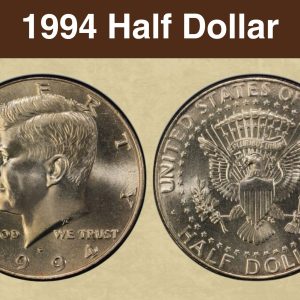
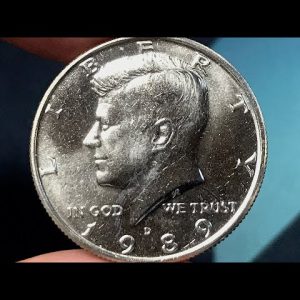
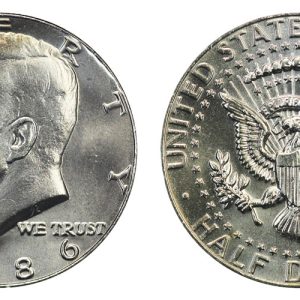
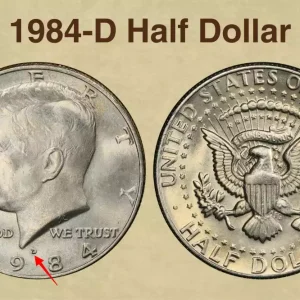
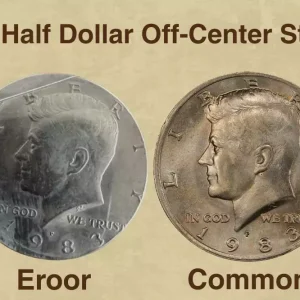
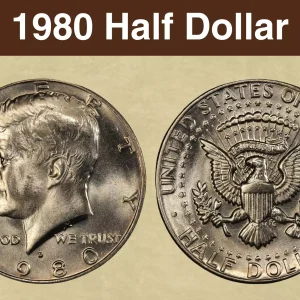
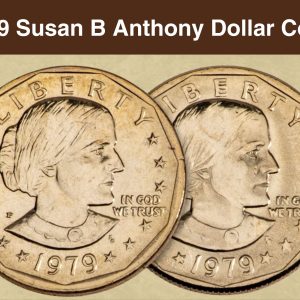
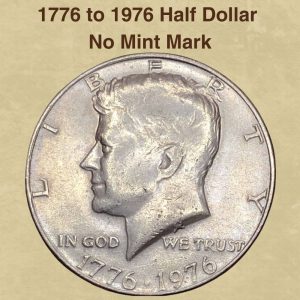
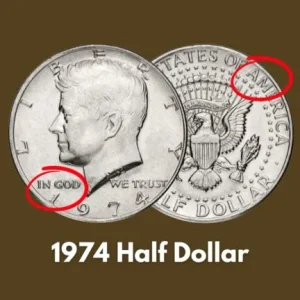
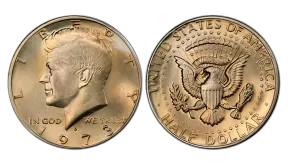
What makes a 1977 half dollar rare today?
A 1977 half dollar is rare if it is a mint error, such as being accidentally struck on a 40% silver planchet, or if it has other significant errors like a double die, a clipped planchet, or a broad strike. High-grade specimens, especially those that are perfect or near-perfect, are also valuable.
What errors to look for on Kennedy half dollars?
Look for common Kennedy half dollar errors such as doubled dies, off-center strikes, die breaks, and filled or missing mint marks. Specific rare errors include the 1964 “Accented Hair” variety, the 1971-D and 1977-D struck on 40% silver planchets, and 1968-S proof coins with an inverted mint mark. For recent coins, look for 2024 errors like the dropped star or die clashes.
How much is a 1977 D Kennedy Half Dollar worth?
A standard 1977-D Kennedy half dollar is worth about $0.60–$1.00 in circulated to uncirculated (BU) condition, but can be worth significantly more if it is a rare error coin. Key errors to look for include a “doubled die obverse” which can be worth tens to over a hundred dollars depending on the grade, or a rare silver planchet error that could be worth thousands.
Are there any rare 1977 silver dollar errors?
This 1977 Eisenhower Dollar has a unique error with the letter “D” filled in, making it a rare find for collectors. The coin features a copper composition with a silver color and a fineness of 0.9. It is a circulated business strike with no certification number and is ungraded.